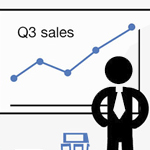On occasion, employers must make the difficult decision to withdraw a job offer or terminate employment based on the results of a background check report. As a best practice and to fully comply with local, state and federal laws, the following steps are recommended.
Making an Adverse Employment Decision
Determine whether the criminal record or discrepancy in the background screening report will present an unacceptable business risk or impact the person’s ability to meet the expectations of the job. Consider the relevancy of the crime to the job requirements, for instance a “driving while intoxicated” violation may have no impact on an office job where driving is not required. Review the severity of the crime, such as misdemeanor versus felony and; the time that has passed since the crime was committed (e.g.,1 versus 15 years ago).
Individualized Assessment
Once a decision has been made to withdraw the job offer or terminate employment, it is best to contact the person as quickly as possible. Let them know the results of the background screening report, and give them the opportunity to explain any perceived discrepancy. If there is evidence that there is erroneous data in the report or other mitigating circumstances, tell them you will re-evaluate the data. If the report is accurate, state that you will be withdrawing the offer or terminating their employment.
Pre-Adverse Action Notice
Let the person know that you will be sending them a pre-adverse action letter. This will give them the opportunity to contact First Contact HR directly if they believe the background screening report is incorrect. This letter will also provide them with a copy of the background screening report, and a summary of their rights under the Fair Credit Reporting Act.
Adverse Action Letter
After waiting seven (7) days, you should send an adverse action letter, which confirms that you made the final decision to either withdraw the job offer or terminate employment.
Changes in Law
Generating pre-adverse and adverse action letters are generally easy and straight-forward. Many organizations utilize a template or an automated process for inserting the subject data into the letters. However, recent changes in laws for some jurisdictions require that for pre-adverse and adverse action notices an employer provide specific information relating to the reasons they are making an employment decision or other documents or information be provided. In these cases, employers will need to customize the letters for each subject in the following jurisdictions to ensure compliance with local laws: CA, MA, NJ, Seattle (WA), Montgomery and Prince George’s Counties (MD), Philadelphia (PA), Portland (OR), Austin (TX), Chicago (IL) and New York City (NY).








 In 2014, nearly 90% of all employers performed some sort of background screening on potential job applicants.[1] The industry really began booming after 9/11 in an effort to, among other things, ensure workplace safety and protect companies from lawsuits for negligent hiring. Unfortunately, many background screening companies are transactional in nature and work within a “big box” mentality, which leads to increased quantity of screens but with a decreased quality review and follow-up. Recently, one of these larger background screening companies was successfully sued for violations of the Fair Credit Reporting Act (FCRA), having misidentified an individual on two separate occasions as a convicted felon. Because of these mistakes, that individual lost two job opportunities. According to court documents, the large screening company failed to follow its own procedures pertaining to persons with common names and failed to implement a practice with respect to individuals previously misidentified. The background investigators also failed to utilize publicly available information which would have led them to discover that – in one instance – the man they identified as the job applicant was actually in jail at the time the actual applicant applied for the position. Although this individual won in court and received a hefty award from the jury, the outcome of similar situations is often times less satisfying, and the burden unfortunately falls on the job applicant to “clear his good name.”
In 2014, nearly 90% of all employers performed some sort of background screening on potential job applicants.[1] The industry really began booming after 9/11 in an effort to, among other things, ensure workplace safety and protect companies from lawsuits for negligent hiring. Unfortunately, many background screening companies are transactional in nature and work within a “big box” mentality, which leads to increased quantity of screens but with a decreased quality review and follow-up. Recently, one of these larger background screening companies was successfully sued for violations of the Fair Credit Reporting Act (FCRA), having misidentified an individual on two separate occasions as a convicted felon. Because of these mistakes, that individual lost two job opportunities. According to court documents, the large screening company failed to follow its own procedures pertaining to persons with common names and failed to implement a practice with respect to individuals previously misidentified. The background investigators also failed to utilize publicly available information which would have led them to discover that – in one instance – the man they identified as the job applicant was actually in jail at the time the actual applicant applied for the position. Although this individual won in court and received a hefty award from the jury, the outcome of similar situations is often times less satisfying, and the burden unfortunately falls on the job applicant to “clear his good name.” In celebration of the much awaited movie, titled “The Force Awakens,” we have decided to release a special Star Wars themed blog on hiring practices. If you have been awake during the past twelve months, chances are you’re heard about the new Star Wars movie coming out on December 18, 2015. This will be great news for loyal fans, and perhaps useless chatter for anyone who has avoided the movie series.
In celebration of the much awaited movie, titled “The Force Awakens,” we have decided to release a special Star Wars themed blog on hiring practices. If you have been awake during the past twelve months, chances are you’re heard about the new Star Wars movie coming out on December 18, 2015. This will be great news for loyal fans, and perhaps useless chatter for anyone who has avoided the movie series.





